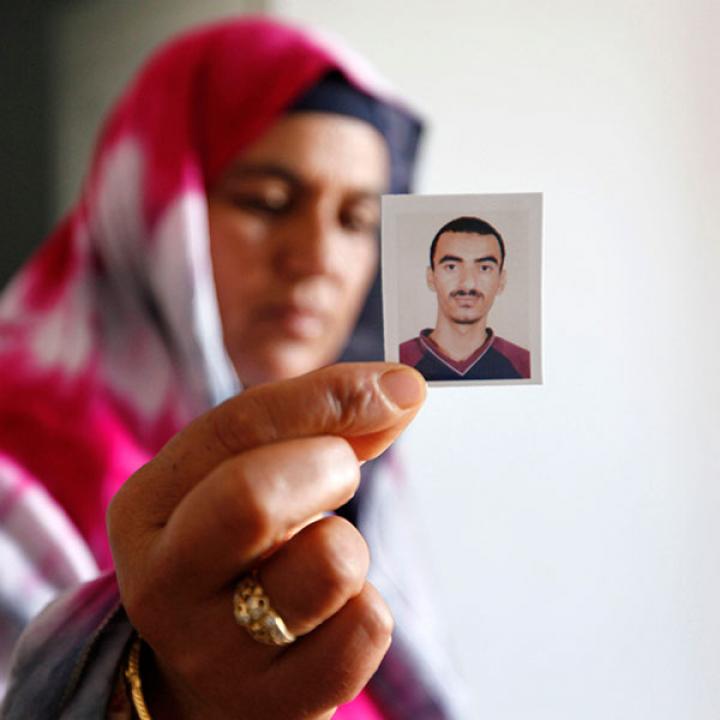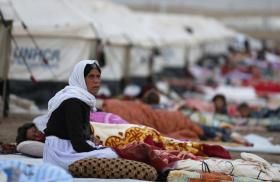

Part of a series: Counterterrorism Lecture Series
or see Part 1: U.S. Efforts against Terrorism Financing: A View from the Private Sector
Two leading experts discuss why thousands of young Tunisians mobilized for jihad in Iraq and Syria, and what governments are doing now that they are taking their cause back home—or to the West.
On December 10, Aaron Zelin and Jacob Walles addressed a Policy Forum at The Washington Institute as part of the long-running Stein Counterterrorism Lecture Series. Zelin is the Institute’s Richard Borow Fellow and author of its new report “Tunisian Foreign Fighters in Iraq and Syria.” Walles formerly served as U.S. ambassador to Tunisia and senior advisor on foreign fighters in the State Department’s Counterterrorism Bureau. The following is a rapporteur’s summary of their remarks.
AARON ZELIN
The heavy mobilization of Tunisians in the Iraqi and Syrian jihad stems from multiple domestic and foreign factors. Back at home, the Tunisian government sought dialogue over suppression for two years after the 2011 revolution, thus allowing jihadists to openly operate without much harassment. As the militant threat grew, however, the government began to crack down on Ansar al-Sharia (AST) in spring 2013, culminating in its designation as a terrorist group that August. The crackdown led to an outflow of fighters, coinciding with the Islamic State of Iraq expanding into Syria and becoming the group now known as the Islamic State (IS).
Yet some of the assumptions about Tunisian fighters have proven untrue. For one thing, fewer of them were involved in Iraq and Syria than is generally believed—around 27,000 tried to join, but only 2,900 actually made it to the conflict zone, less than half the typical estimate. Additionally, mobilization was a nationwide phenomenon in Tunisia, not specific to a particular city or region. And while some fighters joined al-Qaeda affiliate Jabhat al-Nusra at first, most ended up joining IS once it openly announced its presence in Syria in April 2013.
Regarding the motivations of these fighters, three factors stand out. First, many Tunisians became disillusioned with post-revolution politics, especially well-educated youths, who experienced unemployment at extremely high rates. Despite the gradual political progress seen over the past seven years, economic rewards have yet to emerge, spurring some to radicalize. Second, reestablishing the Caliphate was a strong motivator to join the jihad. When IS announced that it had done just that, many in the jihadist movement saw the news as an opportunity for Muslims to be on top again. Third, to atone for perceived past sins, some individuals with criminal pasts joined jihadist groups to redeem themselves.
Once they made it abroad, Tunisian fighters were involved in several kinds of activities. Perhaps most notoriously, two of them took part in the torture and execution of captured Jordanian pilot Lt. Muath al-Kasasbeh. Others engaged in outreach and religious education as part of the IS state-building project. One such individual was Abu Waqas al-Tunisi, who got involved early on and became the face of the IS dawa (proselytization) program, appearing in six of its videos by the end of 2013. For their part, Tunisian female fighters helped shape the vision of IS society, including through the group’s infamous al-Khansa Brigade, led by a Tunisian woman named Umm Rayan.
In dealing with returning fighters, Tunis seems to hope that the problem will fix itself. The government offers no rehabilitation or reintegration initiatives for individuals who fought in Syria—returnees are either detained in prison or free to join general society. Despite the risk of such an approach, Tunisia’s democratic status provides an advantage: the government can rely on the country’s robust civil society to help on such matters rather than conducting a purely security-based approach. Whether this strategy can succeed remains to be seen. In the meantime, given the broad data on the country’s jihadists, it is easy to see why officials in Tunis, Europe, and the United States remain worried about the movement’s intentions.
JACOB WALLES
For years, there was no good answer to the question “Why do so many foreign fighters hail from Tunisia?” Fortunately, Aaron’s new study provides many of the details needed to fill that gap, highlighting Tunisia’s unique situation as a country dealing with terrorism and radicalization in the middle of a democratic transition.
Two aspects of his study deserve particular attention. First, it addresses the complex array of reasons driving the phenomenon. Second, it offers an accurate count of Tunisian fighters who actually made it to Syria and Iraq.
In the aftermath of the 2011 revolution, several major political developments set the stage for the emergence of foreign fighters from Tunisia. That same year, the government declared an amnesty for all political prisoners, a move that wound up freeing many dangerous jihadists. At the same time, the shakeup within the security forces following the ouster of President Zine al-Abidine Ben Ali diminished the state’s capacity to deal with these jihadists, contributing to subsequent problems. And as mentioned previously, the Troika government of 2012-2013 initially tolerated jihadist activities. Taken together, these factors allowed radical groups to form, recruit new members, facilitate travel to Libya, Syria, and Iraq, and, eventually, organize attacks inside Tunisia.
The government’s response comprised four phases. During the first phase (2011 to September 2012), AST and other radical groups were generally permitted to organize in the open and send fighters to join what was then viewed as a popular struggle against Syria’s Assad regime. In the second phase (2012-2014), the government realized it had a problem, as radical groups began carrying out terrorist operations inside Tunisia—starting with the September 2012 attack on the U.S. embassy and followed by two high-profile political assassinations in 2013.
During the third phase (2014-2015), the technocratic government led by Mehdi Jomaa began much closer cooperation with the United States and other foreign partners. A new counterterrorism law was passed in 2015, and the capacity of the security forces to confront terrorism improved. These domestic constraints prompted jihadists to shift their operations abroad, and the increased flow of foreign fighters to Libya, Syria, and Iraq during this period coincided with the rise of IS.
The fourth phase (2014 to the present) has seen the focus shift to returnees, with Tunisians publicly debating how to deal with them. The government realizes that a security-based approach is insufficient, but it has not made much headway toward a more holistic approach. Although the situation has greatly improved compared to 2012-2013, and Tunisia has not suffered a major attack since November 2015, little has been done to address the underlying drivers of mobilization. The government is now able to recognize returnees at official border crossings, but it has no plan for what to do once they are identified, and its security forces lack the means to monitor them. Meanwhile, the country’s overcrowded prisons continue to serve as a breeding ground for jihadists. Tunisia receives assistance from the United States for prison management, but the problems of radicalization and security are closely intertwined with larger political and economic issues, making them particularly difficult to resolve.
This summary was prepared by Reda Ayadi.







